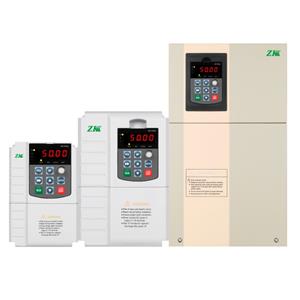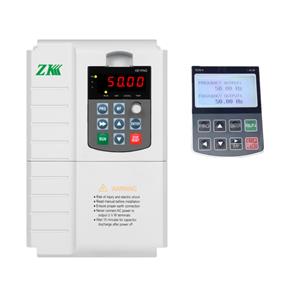Information Management Systems for Solar Pump Inverters
Solar-powered water pump systems have emerged as a sustainable and innovative solution for irrigation, livestock watering, and rural water supply, particularly in off-grid and remote areas. These systems rely on inverters to convert the direct current (DC) generated by photovoltaic (PV) panels into alternating current (AC) to drive water pumps. As the global demand for efficient and reliable solar water pumping systems continues to rise, the integration of information management systems into these setups has become increasingly critical. Information management systems for solar-powered water pump inverters facilitate real-time monitoring, advanced data analysis, and remote control, significantly enhancing system performance, reliability, and user convenience. This essay delves into the role, components, and benefits of information management systems in solar-powered water pump inverters, highlighting their transformative impact on sustainable water management.
The Role of Information Management Systems
Information management systems for solar-powered water pump inverters serve as a centralized platform for collecting, processing, and managing data related to system performance. They provide users with actionable insights to optimize operations, diagnose issues, and ensure efficient energy utilization. By leveraging cutting-edge technologies such as the Internet of Things (IoT), cloud computing, and data analytics, information management systems transform traditional solar water pumping systems into smart, interconnected networks capable of autonomous decision-making and adaptive performance.
Key Components of Information Management Systems
An effective information management system for solar-powered water pump inverters typically comprises the following components:
1.Sensors and Data Acquisition:Sensors are strategically installed to monitor critical parameters such as solar panel voltage and current, inverter output, pump speed, water flow rate, and environmental conditions (e.g., solar irradiance and temperature). These sensors collect real-time data, which is transmitted to the information management system for comprehensive analysis.
2.Communication Modules:Communication modules, such as GSM, Wi-Fi, or LoRa, facilitate data transmission between the inverter, sensors, and the central management system. These modules ensure seamless connectivity, even in remote and challenging locations.
3.Centralized Control Unit:The centralized control unit acts as the brain of the information management system, processing incoming data and generating actionable insights. It can also send commands to the inverter and pump to adjust operations based on predefined algorithms or user inputs, ensuring optimal performance.
4.User Interface:A user-friendly interface, accessible via web portals or mobile applications, allows users to monitor system performance, view historical data, and control operations remotely. Alerts and notifications can be sent to users in case of anomalies or system failures, enabling prompt intervention.
5.Data Analytics and AI:Advanced analytics and artificial intelligence (AI) algorithms can be employed to analyze historical data, predict system behavior, and optimize operations. For example, AI can predict water demand based on weather forecasts and adjust pump operations accordingly, maximizing efficiency.
6.Cloud Integration:Cloud-based platforms enable secure storage of large volumes of data and provide scalability for expanding systems. Cloud integration also facilitates remote access and collaboration among multiple stakeholders, enhancing operational flexibility.
Benefits of Information Management Systems
The integration of information management systems into solar-powered water pump inverters offers numerous benefits:
1.Real-Time Monitoring:Users can monitor system performance in real time, ensuring that the system operates within optimal parameters. This helps detect issues early and prevent downtime, maintaining continuous operation.
2.Improved Efficiency:By analyzing data on energy production and consumption, the information management system can identify inefficiencies and suggest corrective actions, such as adjusting pump speed or optimizing inverter settings, leading to significant energy savings.
3.Remote Control:Users can remotely control the system, turning pumps on or off, adjusting settings, and troubleshooting issues without being physically present, enhancing convenience and reducing operational costs.
4.Predictive Maintenance:The information management system can predict potential failures by analyzing trends in sensor data, enabling proactive maintenance and reducing repair costs, thereby extending the system's lifespan.
5.Energy Optimization:The system can optimize energy usage by matching pump operations with solar energy availability, reducing reliance on backup power sources and enhancing sustainability.
6.Data-Driven Decision Making:Historical data and analytics provide valuable insights for planning and decision-making, such as determining the optimal size of the PV array or storage system, ensuring long-term efficiency.
7.Scalability:Information management systems can be scaled to manage multiple solar water pumping systems across different locations, making them ideal for large-scale agricultural or community water supply projects, offering a unified management solution.
8.Environmental Impact:By maximizing the use of solar energy and minimizing waste, information management systems contribute to reducing the carbon footprint of water pumping operations, supporting global environmental goals.
Challenges and Future Directions
While information management systems offer significant advantages, their implementation in solar-powered water pump inverters faces challenges such as high initial costs, the need for reliable internet connectivity in remote areas, and the complexity of integrating diverse technologies. However, advancements in IoT, edge computing, and renewable energy technologies are addressing these challenges, making information management systems more accessible and cost-effective.
In the future, the integration of blockchain technology for secure data management and the use of machine learning for advanced predictive analytics could further enhance the capabilities of information management systems. Additionally, the development of low-cost, energy-efficient communication modules will expand the reach of these systems to underserved regions, democratizing access to smart water management solutions.
Information management systems are revolutionizing solar-powered water pump inverters, transforming them into intelligent, efficient, and user-friendly solutions. By enabling real-time monitoring, remote control, and data-driven optimization, these systems enhance the performance, reliability, and sustainability of solar water pumping systems. As technology continues to evolve, the widespread adoption of information management systems will play a pivotal role in addressing global water and energy challenges, particularly in remote and resource-constrained areas, paving the way for a more sustainable and resilient future.




